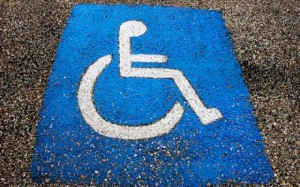Redefining Disability: Our Changing Perceptions of People with Disabilities

Photo credit: taberandrew, Creative Commons
This hour of “Where We Live,” heard on WNPR, a public radio station based in Connecticut, discusses the ways in which societal perceptions of people with disabilities are changing and the things that still need improvement. The two guests are Beth Haller and Suzanne Robitaille, who are both NCDJ Board members.
Haller says that journalists often miss opportunities to report on important issues happening in the community of people with disabilities, such as disability rights laws, the lack of accessible housing in various cities or discrimination against people with particular disabilities, for example.
Robitaille also joins the conversation and discusses her views on the state of disability in the news media and how journalism on these topics can be covered more deeply and with greater precision. She explains the complex nature of defining disability on both societal and individual levels, along with the troubles she saw with NPR’s recent reports, “Unfit for Work.”

